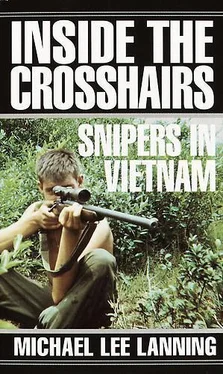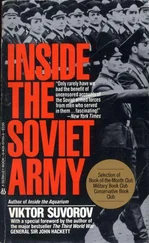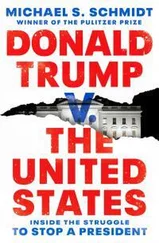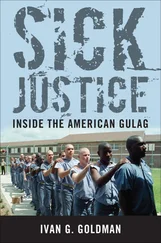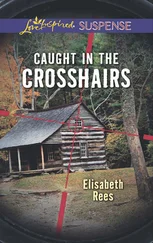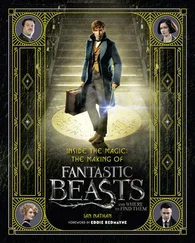“We usually traveled at night to our positions. We also had fallback locations to which we could vanish after we fired or if we were compromised. We’d generally hide all day. Most of our shooting took place during the first hour of daylight and the last hour before dark.
“We did do some day shooting. One afternoon six of us set up on a rise to observe an open area about 400 meters across a river. About two in the afternoon we saw a soldier carrying a rifle and a pack step out into the clearing. In a few minutes a couple more joined him. Soon I had counted 110 fully armed NVA. I called in artillery, and when it was in the air, me and the other sniper squeezed off a few rounds. We knocked down four before the artillery shells began to impact. We then called in an air strike. The forward air observer made a low pass over the clearing and counted thirty-five bodies.
“Not all of our shots were at long range. In the fall of 1967 we were operating at the northeast end of the valley. On day three of a five-day mission we were on a small hill overlooking some dense jungle vegetation now choking a deserted village. There was a trail running to right and left, somewhat toward us, connecting a trail that came by our hide position.
“We were all camouflaged into the grass and underbrush about four feet high. It was a seriously hot day and about to get hotter. We were aligned left to right, six of us. I was in the middle with my radioman to my left, close enough that I could gain eye contact with everyone.
“Suddenly, I couldn’t believe my eyes. First one, then three gooks appeared out of the jungle and started down the trail. I knew instantly they had no idea we were less than 100 meters above. I quietly passed word that we would all shoot at once, two with the bolt rifles and the other four with their M14s with iron sights.
“What a deal! In all my time in Vietnam, I’d never had a chance like this one. As we waited, five more gooks appeared, bringing the total to nine—all wearing uniforms and carrying rifles and packs. They moved slowly but with confidence. We waited a few more minutes. I wanted to be sure the nine were not the point element for a whole company.
“When I was sure that the nine were alone, I whispered, ‘Now,’ and six shots cracked nearly as one. Six gooks dropped. We’d done it! We’d hit six for six. The other three really freaked and dashed for the jungle. We got one more but the other two disappeared like a streak of fire. They never returned a single round at us or even knew our position.
“We watched the bodies for about an hour to see if anyone came to retrieve them, Then with four guys providing cover, me and another Marine crept into the kill zone. All of the dead gooks were real young. Just kids. But, hell, so were we. We recovered two AK-47s, three carbines, and a bunch of grenades and papers. The team then quickly withdrew to another position. We’d had a successful day. Sniper Rogues 7, Gooks 0.
“During six months of action, the Rogue sniper team, never more than eight men, accounted for 105 confirmed enemy kills. We had several guys wounded but none killed.”
Army snipers trained and operated quite like their Marine counterparts. Sergeant Ed W. Eaton of Walla Walla, Washington, entered active duty in October 1968 and arrived in Vietnam the following May as an infantryman in B Company, 3rd Battalion, 60th Infantry, 9th Infantry Division. Eaton recalls, “From the first time I heard that the division had a sniper school, I was interested. I immediately requested the opportunity to attend. I wanted to be a sniper worse than anything—well, not more than a bartender in Saigon or a general’s aide, but if I had to be a grunt this is what I wanted.”
Eaton attended one of the army’s first formal sniper classes, those conducted by the 9th Infantry Division, and during his last six months in-country accounted for twenty-seven successful engagements of enemy personnel. “Like the other units in the 9th,” Eaton remembers, “we had the usual forms of employment, including setting up with infantry companies to cover opportune fields of fire. We also conducted night hunter missions, where members of a two-man team would occupy each door of a Huey helicopter and cruise the rivers after dark. Using Starlight scopes, we would look for targets. When we spotted the bad guys, we shot a tracer round at them. Then two Cobra gunships would roll in and hose down the area.”
Most of Eaton’s kills were at ranges of 500 meters or more—but not all. On one occasion Eaton went on a company sweep operation during which the unit established a defensive position near an abandoned village shortly before sundown. According to Eaton, “The company commander asked me to set up just outside the perimeter to keep an eye on the village. After it got good and dark, I quietly moved out to my position to scan the area through the fuzzy green hue of my Starlight scope. Immediately to my front, only fifty meters away, I spotted a VC squatting near a hootch. He must have heard me moving, because he was cupping his hands to his ears to hear better. He may have heard me, but I saw him. I froze and then watched to see if he was alone or maybe part of a larger element. Nothing moved for several minutes; I decided it was time to do away with this guy and find myself a better location. I knocked him on his back with one shot—my shortest as a sniper.”
Eaton, who turned twenty-one while in sniper school, also had success on the night hunter missions. “We were flying at 500 feet one evening. I lay on the chopper’s floor looking out over the side through a Starlight scope mounted on my M21 rifle. [4] An M21 is a modified 7.62mm M14 rifle that served as the army’s standard sniper weapon system during the war. For additional information see Chapter 10 “Tools of the Trade: Weapons and Equipment” and Appendix A “Sniper Rifle Systems Used in Vietnam.”
Suddenly I observed a sampan on a river with one person aboard. The waterway was closed to all but military navigation, and it was after curfew. I prepared to fire. It’s hard to hit anything from a moving helicopter, especially since you are shooting downward through lots of turbulence, but all I had to do was get close.
“I shot a tracer to mark the target,” Eaton continues, “and waited for the Cobras to fire up the area. They swept in, illuminated the sampan with their searchlights, and then broke off without firing. When we returned to base to refuel, I asked the Cobra pilots, ‘Why didn’t you guys fire? Was it a woman or a kid?’”
“The lead pilot laughed and said, ‘No, man; there was nothing left for us. You got him right in the chest. That was a great shot.’
“I added the kill to my count. But I must admit, it had to be my luckiest shot.”
Despite these exciting, successful missions, Eaton adds, “Mostly sniping is a boring, lonely job. You wait hour after hour taking turns on the scope or Starlight with your partner. Sometimes one shot, one kill. At other times you spot so many of the bad guys that you have to call in artillery and air support while you just watch and direct the show. Then you pick up and go home, only to go out on another mission and then another. Sniping in Vietnam was not always a perfect science. Charlie would show you a different face every time—the man who was best prepared and had the best all-round weapon won, and that is what life is all about. Death may be a sniper’s job, but surviving was also my goal.”
* * *
White, Kugler, Eaton, and hundreds of other Marine and army snipers in Vietnam proved that long-range shooters still had a place on the battlefield—and they proceeded to take their role to a new level. Combining modern technology in weapons, ammunition, and telescopes, U.S. snipers in Vietnam used the experience and traditions of centuries of precision shooters to perfect their craft. They made such a lasting impression that even after the war in Vietnam finally ended, the one-shot killers remained an active and important component of the armed forces of the United States.
Читать дальше
